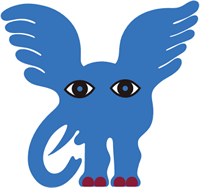Architecture & Design
Architecture
Concept
Designing something intangible
When I first visited the Kansui Park, I saw children jumping on the Fuwa-fuwa Dome, a big air bouncer, and the beautiful Tateyama Mountain Range. If the park were likened to a Japanese style room, the new museum would be an alcove of the room, which is a focal point of a room in Japan. So, in my design proposal for the new museum, I combined the three elements – alcove, children and the Tateyama Mountain Range. To allow a great view, the east-facing side of the museum is covered with an all-glass wall, creating an open area. On the other hand, the exhibition rooms have to be a closed space to allow us to control UV, temperature and humidity. Utilizing this contrast of openness and closedness, I designed the total space structure of the museum. Inside the exhibition rooms, visitors can enjoy art works in serene atmosphere and, coming out to the open area, they can feel their hearts opening up with a panoramic view.
I strongly believe that, if one’s first image or impression of space remains in one’s mind, it will surely become a precious experience. In architecture designing, I try to imagine how people spend their time in front of art works. Audience can experience and feel various intangible things. This is the largest feature of this museum. The most important things in the world would not be seen.
Hiroshi Naito
Architect
Hiroshi Naito内藤廣
Mr. Naito is an architect, professor emeritus at the University of Tokyo and the architect designer for the Toyama Prefectural Museum of Art and Design. He received his master’s degree in architecture from Graduate Schools of Waseda University. After working at Fernand Higueras in Madrid, Spain and Kikutake Architects in Tokyo, he established Naito Architect & Associates in 1981. After serving as professor and vice president at the University of Tokyo from 2001 to 2011, he is professor emeritus at the university since 2011. He also served as jury president of the Japanese Good Design Award. His main projects include Toba Sea-Folk Museum (Awarded: Award of the Architectural Institute of Japan in 1992), Chihiro Art Museum (1997), Tenshin Memorial Museum of Art, Ibaraki (1997), Makino Museum of Plants and People (Awarded: Mainichi Art Award in 1999) and Shimane Art Center (2005).
http://www.naitoaa.co.jp/
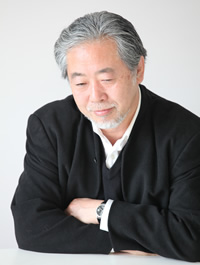
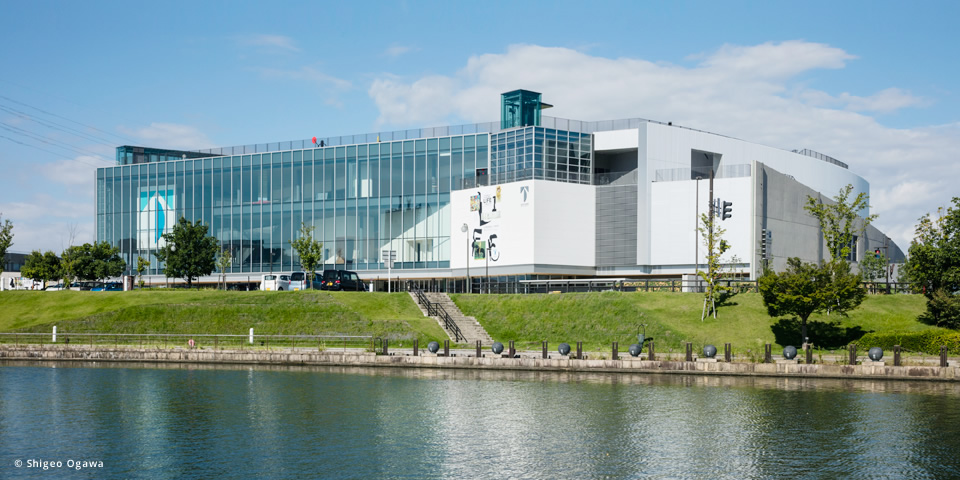
Architecture Data
- Address
- 3-20 Kibamachi, Toyama City, Toyama Prefecture
- Architect
- Naito Architect & Associates
- Structural Design
- KAP
- Building Services
- P.T. Morimura & Associates, LTD
- Construction
- Building: Joint Venture of Shimizu Corporation, Miyoshi Construction and Maeda Corporation
HVAC system: Joint Venture of Hokuriku Electric Construction Company, ALTA and Yuho Setsubi
Electrical system: Joint Venture of Kurishima, JMC Engineering and Kosugi Kodensha
Hygiene system: Joint Venture of Meiki Sogo Setsubi and Sakai Sangyo Co., Ltd. - Supervision
- Naito Architect & Associates
- Structure
- Steel construction (partially steel-reinforced concrete)
- Number of stories
- Three-stories
- Site area
- 12,548㎡
- Building area
- 6,683㎡
- Floor area
- 14, 990㎡
(used for museum: 9,965㎡) - Maximum height
- 19m
Logo Mark
Concept
This logo – composed of letters A and D – represents Letter T, the initial letter of Toyama. It means this is the place bridging art and design. Each color represents an aspect of the beauty of Toyama. Light blue represents the sky of Toyama against which white Tateyama is set off and dark blue represents the deep and rich Toyama Bay. By arranging the museum’s name under the logo, the longitudinal form of the logo is emphasized and the design looks sophisticated.
Kazumasa Nagai

Graphic Designer
Kazumasa Nagai永井一正
Mr. Nagai was born in Osaka in 1929. After leaving the Department of Sculpture, Tokyo National University of Fine Arts and Music (present Tokyo University of the Arts) in 1951, he participated in the establishment of the Nippon Design Center in 1960. He is supreme advisor to the center now. He is also serving as director of JAGDA and member of ADC and AGI. Since 1960, Mr. Nagai has received many awards: Japan Advertising Artists Club Award, Grand Prix at the Asahi Advertising Award, Yamana Prize at the Japan Advertising Award, Yusaku Kamekura Design Award, Masaru Katsumi Award, Grand Prix at ADC, Mainichi Design Award, Mainichi Art Award, Ministry of International Trade and Industry Distinguished Service Award for Design, Minister of Education Award for Fine Arts, Medal of Honor with Purple Ribbo, Order of the Rising Sun, Gold Rays with Rosette, Fourth Class, Gold Award from the Warsaw International Poster Biennales, Grand Prixes at international design awards held in Brno, Moscow, Helsinki, Zagreb, Ukraine and Hong Kong.
Permanent Collection: the National Museum of Modern Art, Tokyo, the National Museum of Modern Art, Kyoto, the Museum of Modern Art, Toyama, Gunma Museum of Art, Tatebayashi, Tochigi Prefectural Museum of Fine Arts, Himeji City Museum of Art, The Museum of Modern Art, The Museum of Modern Art, New York / MoMA, National Museum of Abstract Art, Germany, International Poster Museum in Warsaw
http://designcommittee.jp/
http://www.ndc.co.jp/
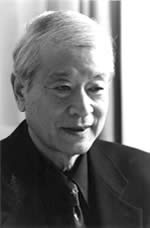
Staff Uniform
SPRING SUMMER
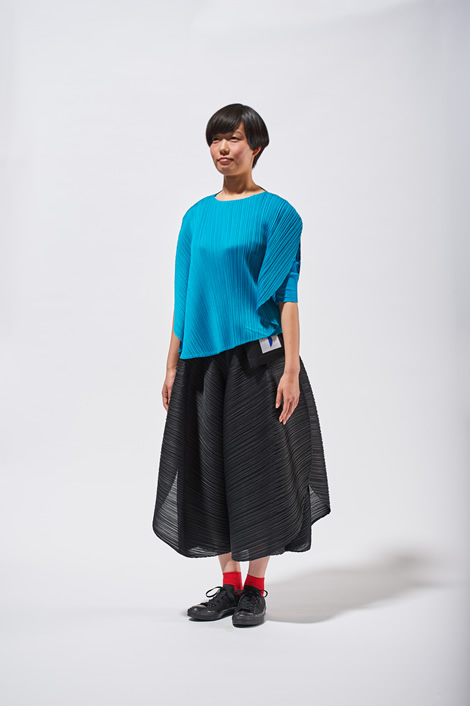
©2017 ISSEY MIYAKE INC.
AUTUMN WINTER
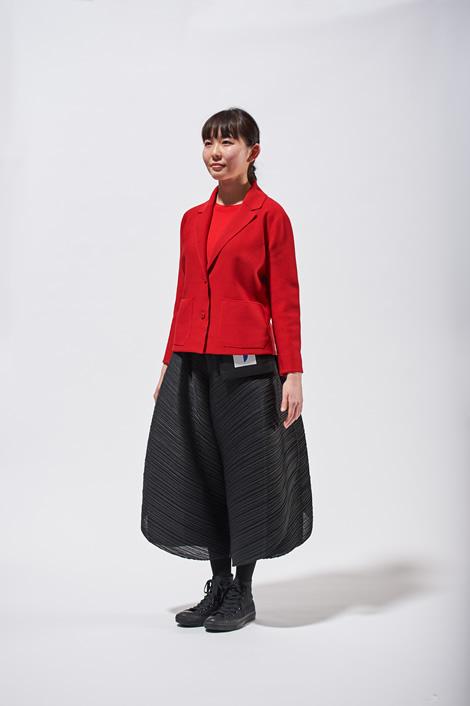
©2017 ISSEY MIYAKE INC.
Concept
I am looking forward to the opening of the Toyama Prefectural Museum of Art and Design. I went back to study the nature and culture of Toyama, which in turn inspired me to incorporate Toyama’s brisk wind and beautiful light into the uniform we created for the staff.
I tried to create a uniform utilizing both cutting-edge technologies, such as our original pleating techniques and A-POC’s engineering, both of which have evolved. Our wish is that a new wind will spring from this site and that the uniform will become clothing that appeals to those who wear it as well as those who see it.
Designer
Issey Miyake三宅一生
Established the Miyake Design Studio in 1970. Started presenting his collections in Paris in 1973. At the heart of Miyake’s clothes making is the concept of “One Piece of Cloth,” and the exploration of the relationship between the human body and the cloth that covers it. Launched the line “PLEATS PLEASE ISSEY MIYAKE” in 1993. Started working on “A-POC” (A Piece of Cloth) in 1998 with Dai Fujiwara and the team. Currently, working with Reality Lab and presented “132 5. ISSEY MIYAKE”, etc. In 2016, presented the exhibition “MIYAKE ISSEY EXHIBITION: The Work of Miyake Issey” at The National Art Center, Tokyo. The books of Miyake’s works include “East Meets West” (publisher: Heibonsha, 1978), “ISSEY MIYAKE” (publisher: TASCHEN, 2016). Received the Order of Culture in 2010 in Japan bestowed by the Emperor, and the Commandeur de l’Ordre National de la Legion d’Honneur from France in 2016.
http://mds.isseymiyake.com/mds/jp/top/
http://www.isseymiyake.com
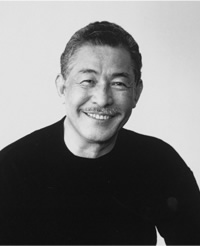
photo by Brigitte Lacombe
Opening Poster
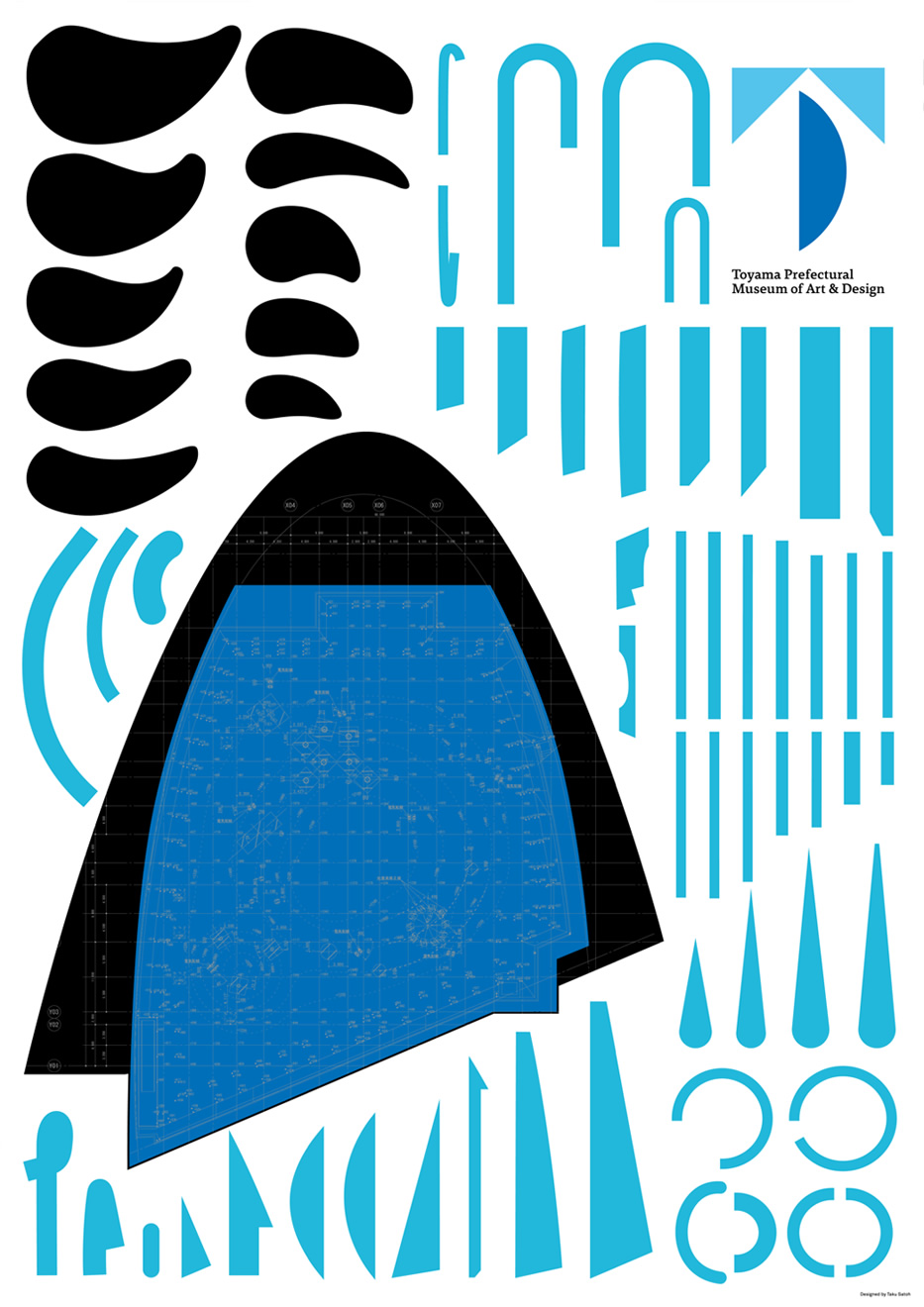
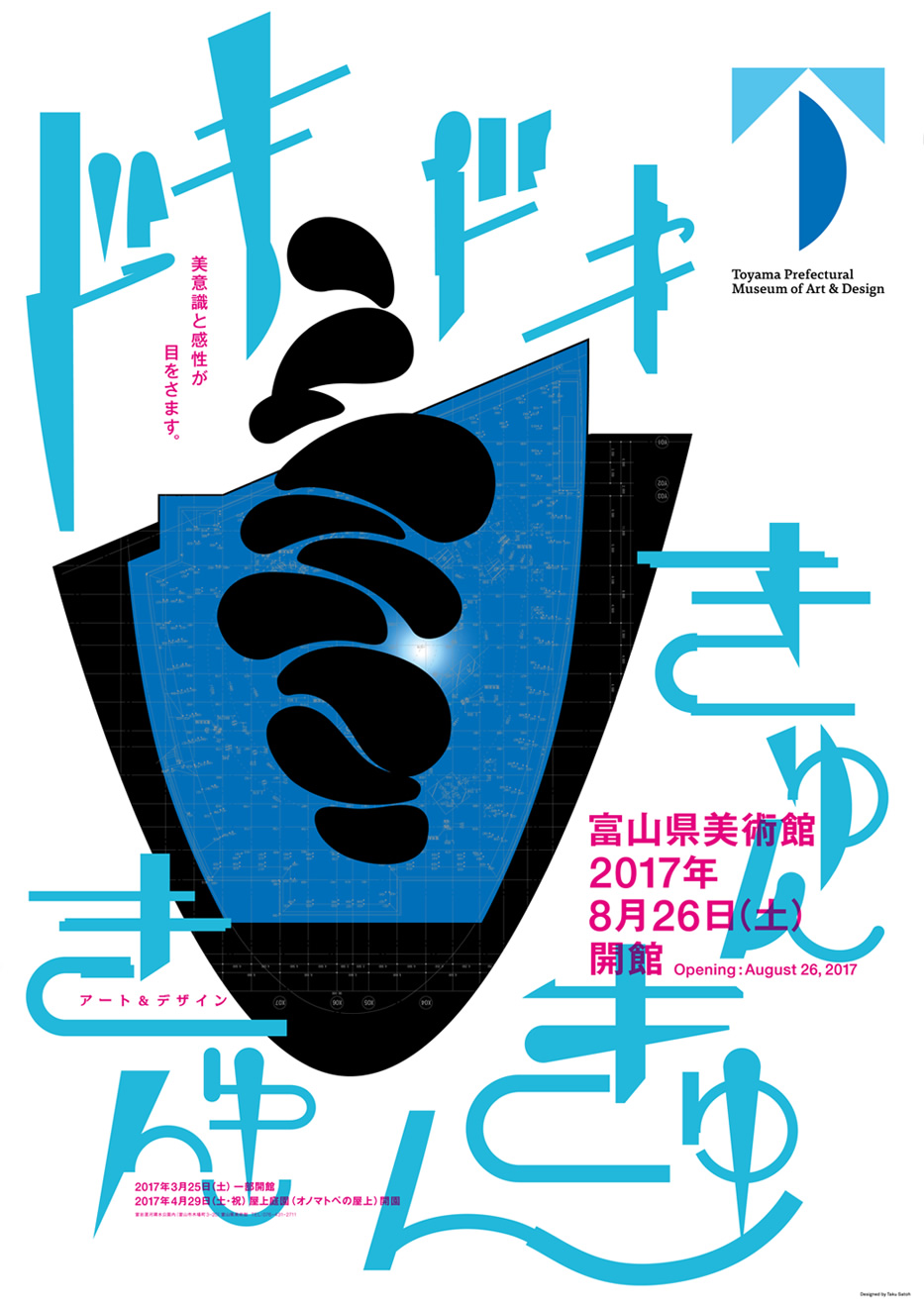
Concept
“It must look happy.” That’s what I thought when imaging a poster heralding the grand opening of the Toyama Prefectural Museum of Art and Design, as a new type of museum with the two axes, art and design. In general, museums tend to produce beautiful posters. However, stereotype beauty or an explanatory poster doesn’t attract anyone’s attention. So, in designing of this poster, I paid much attention to creating a happy, curious and imperfect image which would make people wonder what the museum would be. The catch phrase “ドキドキ (Doki Doki) (ba-dump, ba-dump) きゅんきゅんきゅん (Kyun Kyun Kyun) (onomatopoeia for heart throbbing) combined into the visual part of the poster were chosen by Shinzo Higurashi from Japanese onomatopoeia which is the theme of the museum’s rooftop garden. Japanese language is a treasure trove of onomatopoeia. I expect this museum will be a museum which makes visitors feel ドキドキ きゅんきゅん (Doki Doki Kyun Kyun) every time they visit the museum.
Graphic Designer
Taku Satoh佐藤卓
In 1979, Mr. Satoh graduated from Department of Design, Tokyo National University of Fine Arts and Music (present Tokyo University of the Arts) and completed his master’s degree in 1981 from Tokyo National University of Fine Arts and Music (present Tokyo University of the Arts). After initially working for Dentsu, Inc., he established Taku Satoh Design Office Inc. in 1984 and changed company name, TSDO Inc. in April, 2018. He has been engaged in a wide range of artistic activities, including product development of Nikka Whisky’s Pure Malt, package designs of LOTTE XYLITOL Gum chewing gum and MEIJI Dairies’ Oishii Gyunyu milk, graphic design for PLEATS PLEASE ISSEY MIYAKE, the logo marks for the 21st Century Museum of Contemporary Art in Kanazawa, the National Museum of Nature and Science, Tokyo and National High School Baseball Championship. He has also served as art director for the “Nihongo de Asobo” children’s program on NHK’s educational channel, overall supervisor of the “Design Ah!” children’s program on the same channel, and one of three directors of 21_21 DESIGN SIGHT. His publications include “Kujira wa shio o fuite ita” (DNP Art Communications), “SOSURU SHIKO” (SHINCHOSHA Publishing Co., Ltd.) and so on.
http://www.tsdo.jp/
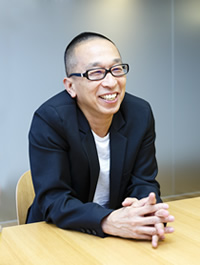
Miruzo
TAD’s Mascot Character “Miruzo”
“Miruzo” was created as a mascot character of the Museum of Modern Art, Toyama in 2011 to commemorate its 30th anniversary of foundation. Designed by Kazumasa Nagai, who has designed the museum’s poster since it opened.
The name “Miruzo” was chosen by the public. Miruzo is a kind of pun in Japanese, which has two meanings: one is an elephant watching something, and the other is willingness to watch, both of which are suitable for museum mascot’s name and easy to remember.
Miruzo’s ears look like hands or wings and his large eyes are impressive. Please enjoy a new encounter with the 20th century art with Miruzo.
The Museum of Modern Art, Toyama is reborn as the Toyama Prefectural Museum of Art and Design on August 26, 2017. Miruzo is also reborn as blue Miruzo.
